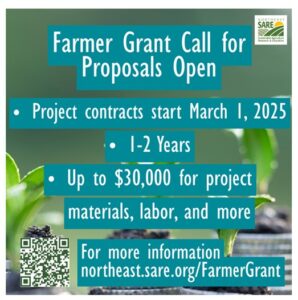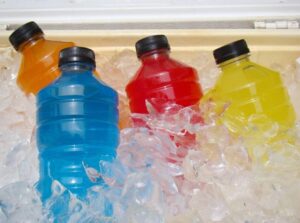
Farmers in the Northeast can apply for up to $30,000 in funding for sustainable agriculture projects starting in 2025. These projects can range from experiments to on-farm events and demonstrations or other educational activities.
The Call for 2025 Northeast Sustainable Agriculture Research and Education (SARE) Farmer Grants is now available. Approximately $850,000 has been allocated to fund projects. Awards of up to $30,000 are available. Proposals are due no later than 5:00 p.m. EST on November 12,2024.
Q&A Sessions are taking place alternating Tuesdays and Wednesdays in October. Register once to attend any of the sessions.
Sessions will take place on: Oct 8, 16, 22, 30. from 12 to 1 EST
To register see https://us02web.zoom.us/meeting/register/tZAlcO-qrjguGtSNrOemAOP7pZWbUCcl5GqN#/registration
To see the call for proposals https://www.sare.org/wp-content/uploads/Northeast-SARE-Farmer-Grant-Call-for-Proposals.pdf
To learn more about the SARE Farmer Grants https://northeast.sare.org/grants/get-a-grant/farmer-grant-program
For More Information contact USDA NESARE or your State Coordinator: Stephen Komar at komar@njaes.rutgers.edu
 Article By: The Rutgers Farm Health and Safety Working Group: Kate Brown, Michelle Infante-Casella, Stephen Komar and William Bamka
Article By: The Rutgers Farm Health and Safety Working Group: Kate Brown, Michelle Infante-Casella, Stephen Komar and William Bamka